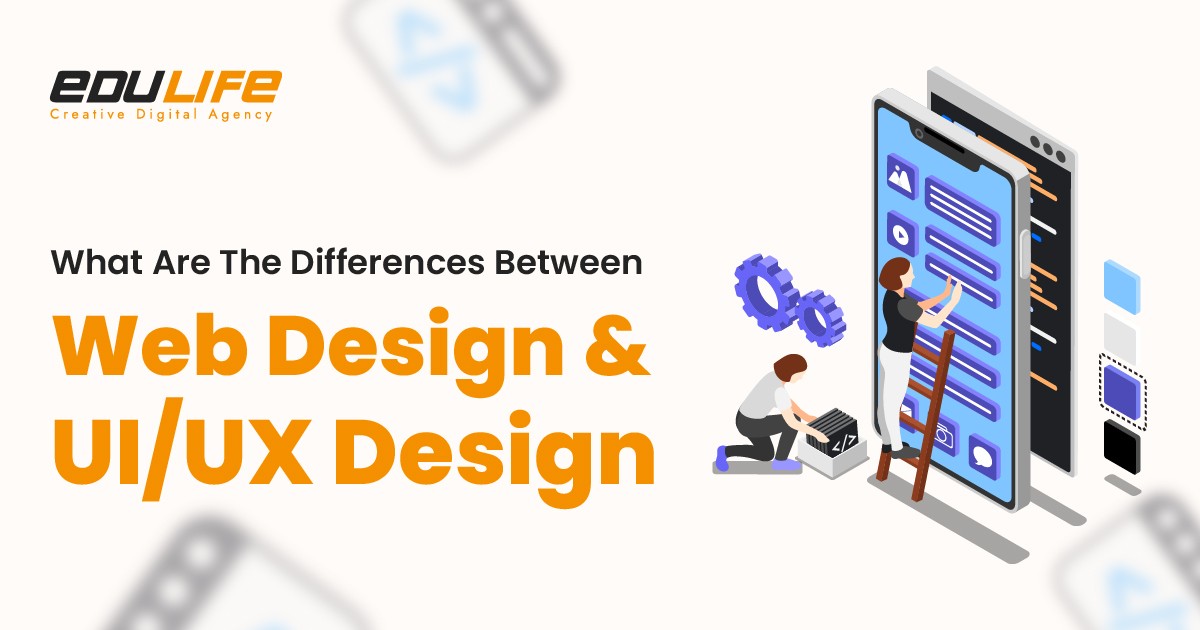
Web design and UI/UX design are important in generating successful and charming digital experiences. Both disciplines greatly inspire the look and capability of a website or app, but they need different skill sets and areas of interest. The general format, looks and structural elements of a website are the focus of web design. UX design focuses on user-friendly interfaces and making interactions simple for users.
The principal differences between web design and UI/UX design are explored in this article, which also explains how each relates differently to digital enjoyment.
Web design is the art of organizing and building material for a website so that it may be seen and shared globally. A website's appearance includes its colors, fonts, image and user interface. Both functional and visual components influence it (refer to our guide on website design best practices).
Building a website is now one of the key components of establishing an online presence. As a result, the lot of web design is more active than ever. It is always changing including user interface design and mobile apps to meet the increasing demands of both website owners and users.
From web design facts to SEO optimization and user experience, it is mostly a collaborative technique that balances tools and information from related sectors. By excluding as many potential sources of user annoyance as possible, it gains and maintains the trust of the future audience.
The way people will engage with an output is decided by its user experience (UX) design. It is focused on feelings and experiences rather than the user interface, which focuses on images. It applies to almost anything a person can come across.
The same is true for software. The UX design allows whether the user-computer interface is easy to use and intuitive and how exact the navigation feels. Whether the app's capability meets users' expectations and efficiently satisfies them and other elements.
UX designers also work with the user interface, which is probably why many people are confused as to how the responsibilities of UX and UI designers change and why they compare UX with web design. The look at user experience design looks at how challenging it is for a user to interact with a user interface.
Apart from having complete knowledge of how users typically connect with software developments, empathy is a crucial feature for user experience designers to have.
Web design and UX design are not the same thing and they differ greatly from one another. These four ideas about web vs UX design explain how each discipline throws fundamental issues.
In Web design, the primary focus is growing outstanding websites for the internet. A web designer depends on generation—the trendy versions of coding languages and web browsers—to keep up with the specifications required for modern dynamic and responsive designs, as well as the latest browser requirements.
On the other hand, UX design remains targeted at the users. UX designers focus on research to gather insights and perform optimizations that cater to a particular person's needs. Technology is still involved but mostly as a means for users to get what they want. Their ultimate goal is to fulfill users’ requirements as opposed to web browser ones.
Web design is most effectively concerned with making websites that function on desktop or mobile web browsers.
Meanwhile, UX design works with desktop software, mobile programs, websites, and even non-digital things.
Web design generally does not follow UX design's human-targeted method. Rather than focusing on how a person could interact with the website. A web designer might prioritize the website's aesthetics. A website designer might also reduce unnecessary material and keep capacity by determining documents and modifying web page content if a page loads slowly.
UX design is organizing ongoing improvements through user interaction experience-based gaining knowledge of and application of understandings to create a better outcome. A UX designer’s first attention has to be boosting user engagement and loading speeds on key pages before addressing the complete website.
To achieve their goals, a web designer uses several tools. This includes graphic design programs like Adobe Creative Suite and computer languages like HTML, CSS and JavaScript tools for designing user interfaces.
In evaluation, UX design requires the use of tools such as Figma for you to create wireframes and project flows for various user personalities. They could also use feature identification and analytics technologies to collect information about various UX elements.
Visual designers cover both web and UX designers. Growing stories that can be both efficient and easy to use is their shared goal. To do that, they each take part in.
To conclude, despite both being designed to improve web design and UX design they discuss greatly in their methods areas of combination and available resources. By using coding languages and graphic design tools to build visually attractive and responsive interfaces.
On the other hand, UX design focuses on the user's interest in and journey across all platforms digital and non-digital to create interactions that are enjoyable and smooth. They work together to combine attractive design with useful capabilities to provide a complete user-friendly experience, which ultimately increases user engagement and confidence.